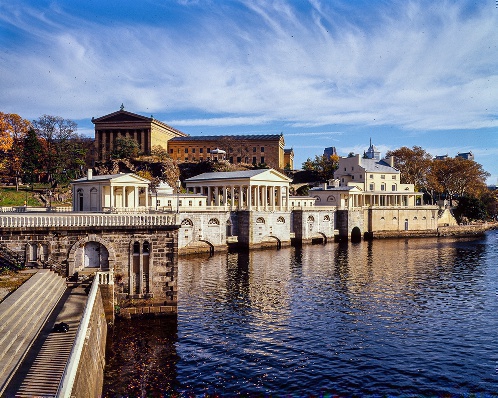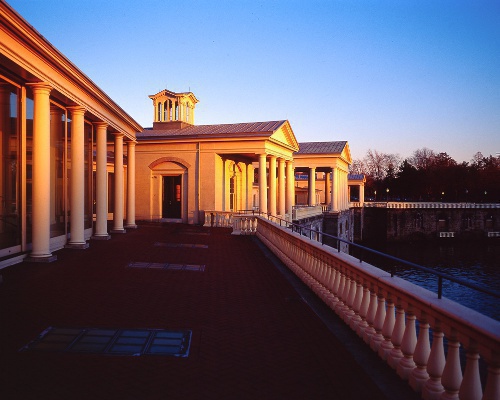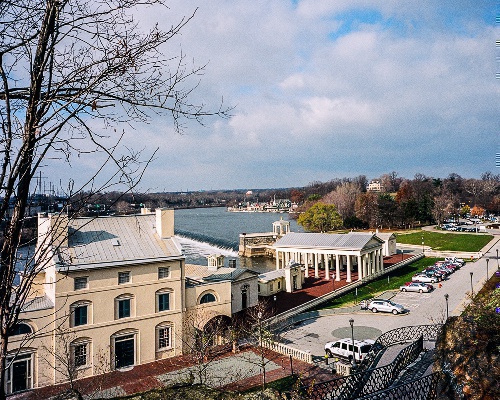A Greek sacred village of temples concealing state – of – the – art technology, the Waterworks was a must see attraction in the 19th Century and remains one today.

A traveler to Philadelphia in the early 1800’s would have insisted on seeing two landmarks which represented the city’s (and America’s) innovative outlook: Eastern State Penitentiary and Philadelphia’s Waterworks. The Waterworks were designed in the early 1800’s by Fredrick Graff, an engineer who has assisted Benjamin Latrobe on an earlier waterworks in the 1790’s. Graff’s system, like Latrobe’s before it, depended on steam power to pull water out of the Schuylkill, but Graff emptied the water into a huge reservoir on top of Faire Mount, where the art museum is today.
This solved the major problem with Latrobe’s system which had used a tiny reservoir with enough water to last only 25 minutes if the pumps failed, which they often did. Graff’s system used two steam pumps which filled the enormous reservoir providing a large reserve and provided more consistent pressure.


This superior design still had to be upgraded and tweaked as Philadelphia’s rapid growth demanded more and more water. Supply was able to keep up with demand (barely) but the fuel cost (wood) was also growing enormously.
In 1822 a huge dam was built across the river (one of the longest in the world at the time) which drove water into a mill race (now filled in) between the Waterworks and the cliffs of Faire Mount and then through waterwheels (and later turbines). Using water’s energy to lift water up to the reservoir, while clothing the machinery in Greek Revival Architecture and surrounding it with gardens and fountains, created the Waterworks reputation as a modern wonder.


Today we see the Waterworks’ original pump house, the Federal house like structure on the downstream end of the complex, and a series of small Greek inspired pavilions and buildings arrayed along the river. From across the river or on the hill behind it, each building’s rigid classical symmetry plays off the overall grouping’s asymmetrical picturesque arrangement.
Ok, the Schuylkill isn’t the Aegean, but seeing the white pillars sitting on the rusticated stone base rising out of the water does echo an old frequent relationship between Greek architecture and water. When walking around the buildings the view is entirely different with views of the river and the river bank suddenly opening up. It’s a little like walking around a tiny village, and at sunset, with the buildings bathed in a gold light, you just might be in the Aegean after all.